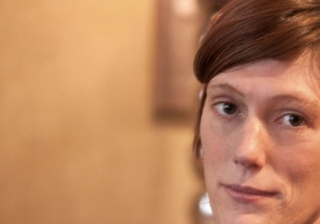Nicole Im in Literary Hub:
 Joanna Kavenna is a philosopher dressed down in the sensory details of the novel. Kavenna, who took her last name from the Norwegian name for woman, seems to be reassembling the world from its basic questions—what are we and why are we here?
Joanna Kavenna is a philosopher dressed down in the sensory details of the novel. Kavenna, who took her last name from the Norwegian name for woman, seems to be reassembling the world from its basic questions—what are we and why are we here?
In her latest, A Field Guide to Reality, protagonist Eliade Jencks is always one scent or thought-carom away from the void. In one moment she notes the smell of laundered handkerchiefs and the sound of clattering plates while pondering questions like “does perception create the world, or is it there before us, preset and perpetual?” A Field Guide to Reality circles these questions through the point of loss. After learning that her friend Professor Solete has died, Eliade embarks on a journey to find his mysterious “Field Guide.” She is pulled into the strange worlds of Solete’s various colleagues, and as her journey progresses, finds it harder and harder to “determine what [is] real and what [is] not.”
Nicole Im: Nature plays a big role in your recent story in Freeman’s, “If There Was No Moon,” and in your novel, A Field Guide to Reality. Cold, dark rivers, shadow-casting trees, circling birds, and throughout A Field Guide, a swirling, smudging mist. How do you view the relationship between the physical world and philosophical ideas, and how do they connect in your writing?
Joanna Kavenna: For many years I had this idea about an impossible book, which would supply cogent, succinct answers to all those ambiguous and perplexing questions about the meaning of life and death, i.e a field guide to reality: a sober, helpful, lucid manual for fixing existential angst, like a manual for fixing a car. So that was the idea behind A Field Guide to Reality—this idea of an impossible book.
I’m very interested in philosophical questions about reality and truth and the meaning of things. I don’t think there should be an esoteric elite that gets to think deeply about life, and surrenders its hallowed revelations to the rest of us. I think we all have the right to speculate about what the hell is going on. Because it’s all very weird but it’s actually happening to us—just this once, just for now. Perhaps because of all this, my narrators observe things in quite a detailed and even at times frenetic way—whether they’re in the countryside or in a city or town. To me, also, philosophical thought and the surrounding environment are allied, partly because I walk long distances, whenever possible, to work out my ideas.
More here.
Clare Malone at FiveThirtyEight:
